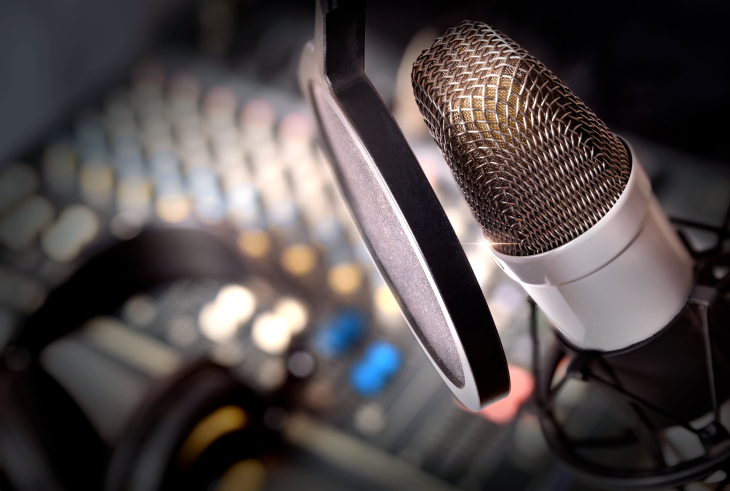Ep 5 Live Q&A – March 20, 2019 – How do I make my voice soft and how do I yell my music?
Mike: Awesome. Wow, I mean, that’s just a really helpful troubleshooting checklist, if you will, of the steps that you can go through to how to find out how to make a room or more space as you sing higher, right? So thank you for that, and let’s move on to the next question, question number four. This will be our last question today. Question number four is “I want to learn how to make my voice soft and learn how to yell my music.” So kind of two parts to that. This one comes in from Oren. Thanks, Oren, for writing in.
Matt Edwards: Yeah, so, Oren, what I would say is go back to the first video we addressed today because we did talk about how to get your voice to be able to have some dynamic bearing. So I would start with what we put in that first step, specifically figuring out how to get soft, right? Because a lot of times, if you pursue the yelling first and the loud singing first, you’re going to start to create some tensions that are going to be hard to get rid of, whereas if you find neutral and soft first, you can then build-up to the yell-y sound or the louder sound and then come back to the middle and come back to soft, okay?
Matt Edwards: Yelling is a term that gets a lot of people worked up when it comes to singing, right? I know what you’re talking about. I listen to a whole lot of music styles. I love me some Lamb of God, love me some Metallica, Halestorm, so that big yell-y, hardcore metal. Dig it. But that yelling often gets people worried about voice damage. So what I prefer to call it is calling, right? We’re used to calling out to people like I mentioned earlier in sports, right? I played soccer when I was a kid, and you would try to yell at people across the field and get their attention, and you didn’t have to think a whole lot about it. Your body just knew how to call across a long distance.
Matt Edwards: So what I would say is we want to start looking at building from that middle part of your voice into a calling sound that you can then extend into the upper part of your range, okay? So the first thing I would do is just beginning in the middle with those incremental volume level exercises. By the middle, for the men, I’m starting here on like a D-major chord, maybe an E-major chord. For women, I would start on a C-major chord or a D-major chord. We’re going to just start up and sing that at the same volume level you speak. (singing) “Yeah, yeah, yeah, yeah.” And get comfortable doing that and moving our voice up into the upper part of our range, back down, and then down into the lower part of our range, and then back to the middle. Then increase the volume level a little bit, and a little bit, and a little, just like we talked about in some of the earlier questions here today.
Matt Edwards: Then what we’re going to want to start doing is taking that kind of a voice and using sirens or glides or slides to carry some of that mid-quality up into the upper part of your voice. We’re going to be doing that as if we are calling and we’re going to do it with both bright sounds and warm sounds or rounded sounds. So we’re going to start off with “yeah,” and we’re going to just do it slowly, ride that “yeah” all the way up to wherever feels comfortable, and then bring it back down. So it’d be (singing) “Yeah!” The whole time you’re doing that glide, you want to make sure that everything is getting out of the way. If you feel tension creeping into your jaw or your tongue, go back and look at some of our past videos, figure out how to get that jaw and tongue to loosen up, then try it again. (singing) “Yeah!” A little vocal fry there. Not the best, but that comes from sleeping all day and being vocally exhausted from the change in weather and the allergies here in Virginia. So ideally, no fry.
Matt Edwards: Then you’re going to take it over and you’re going to do a rounded “oh” vowel. You’re going to do (singing) “Oh!” So then we’re going to alternate between that “Oh” and that “oh” and that “yeah.” (singing) “Oh! Yeah!” And keep playing with it, finding that edge where it’s too far, where you are actually pushing, you are starting to fry out, or you’re starting to feel like there’s some tension in there or gripping in there. Gripping is actually going to make your voice quieter, not louder. So anytime you feel that grip, you’ve got to get rid of it. Inside it might feel like you’re singing louder, but that gripping is actually-
Matt Edwards: All right? And then on the other side of that, we can play around but then starting to put in some arpeggios. The speech level singing people use a great exercise where it goes (singing) “one, three, five, eight, eight, eight, five, three, one.” So we could do that on “yeah, nay, nee.” So we’ll do (singing) “nee, nee, nee, nee, nee, nee, nee, nee, nee, nee.” Then we could open up the vowels. (singing) “Nay, nay, nay, nay, nay, nay, nay, nay, nay. No, no, no, no, no, no, no, no, no, no.” Okay, that opens your range. That’s going to start to put the pitch to those louder sounds, and it’s going to help you build stamina and control along the way.
Matt Edwards: And then what I would just do is take your time to let it build up and realize that you have to let the microphone do a lot of the work, right? So when you put a microphone in front of your mouth, and the volume level’s cranked up, it’s going to be louder than anything you could produce acoustically. So trying to beat the drums onstage, which usually play at 130 decibels, is never going to happen. I have yet to see a study where any singer’s made sounds over 130 decibels. The highest I’ve ever seen in the study is maybe 115. So it’s impossible to out sing your guitarist and your drummers, your keyboardist, whatever. Use the mic and only do it to the place of freedom where those constrictors do not creep in.
Matt Edwards: If you have a weak voice already, Mike and I were talking earlier that you’re going to want to use an E vowel in the middle part of your range because the E vowel helps us bring some of that clarity in and gives chord closure, and so if you’re starting off from a place of breathy singing, you’re first going to want to figure out how to get (singing) “Eee.” Go from that place to more open vowels, and then start this work.
Mike: Yeah, absolutely, I couldn’t agree more. I know for me specifically when I was working on this in my voice, it was the E vowel exercise because of the additional compression that it can build in the voice, so let’s see. Do we have any other questions here today? I don’t think we have anyone drop in. Any questions? So, guys, thanks so much for attending again. We do this every week. We go through your questions. So thanks for tuning in. Thanks for joining us. Thanks for all of our viewers and the audience out there. Again, jump on into our page or drop your question in below and just submit anything you want to know, if you have a question about your voice, you’re curious, we’re happy to answer them for you here today. And thanks again, Matt, for your time. And hey, everybody, have a great week. Take care.
Matt Edwards: See you next week.
Mike: See ya.
about the author
Mike ElsonMike loves to sing and make magic happen with computers and music. After trying lots of ways that didn't work to find his head voice, his voice ended up broken and his concepts mixed up. Before there was Google, he rebuilt his technique from square one with Dr. Joel Ewing, providing him plenty of humility and loads of first-hand empirical knowledge about the inner workings of the voice. Mike strongly believes that "everyone should be trained as a tenor," because of the additional skills required in balancing registration for this specific voice type. He has enjoyed singing in Mrs. Kim Barclay Ritzer's award-winning GVHS choir in Las Vegas, Nevada and with Dr. Dhening's internationally acclaimed USC Chamber Choir in Los Angeles, CA. Mike brings his passion for singing along with his pedigree to bring the voice training industry a new platform to make online voice lessons more successful, help choirs raise funds, and grow better singers. VoiceLessons.com is a way to pay it forward to a new generation of singers who are looking to start their training or take their voices to the next level by searching for options online. Welcome, and enjoy!
RECENT ARTICLES
RECENT IN KNOWLEDGE
Recent Topics
- Beginning Voice Lessons (1)
- Breathing Techniques (1)
- Confidence (1)
- Experienced Teacher (1)
- Kids Singing Lessons (1)
- Musical Career (1)
- Practice (1)
- Private Lessons (1)
- Professional Singer (2)
- Sing (1)
- Singing Teachers (2)
- Style (1)
- Teach Online (1)
- Vocal Exercises (1)
- Vocal Health (1)
- Vocal Music (1)
- Vocal Pitch (3)
- Vocal Range (4)
- Voice Coach (1)
- Voice Exercises (2)
- Voice Training (4)
- Young Vocalist (1)
Categories
- Basic Skills (7)
- Beginners (8)
- Career (2)
- CCM (1)
- Contemporary Commercial Music (1)
- Crossing Over (1)
- Exercises (2)
- Online Lessons (3)
- Online Voice Lessons (1)
- Songs (2)
- Students (6)
- Tips (4)
- Vocal Coaches (1)
- Voice Teachers (2)
- Warmups (2)
Testimonials




-
Ep 10 Live Q&A - April 24, 2019 Question 7 - How do I shape my mouth when I sing vowels?
-
Ep 10 Live Q&A - April 24, 2019 Question 1 - How do you control a vibrato that is too fast?
-
Ep 4 Live Q&A - March 13, 2019 - How do you know your voice is damaged?
-
Ep 3 Live Q&A - March 6 2019 - How much breath do you need to support a good belt?
-
No Post Found!!







